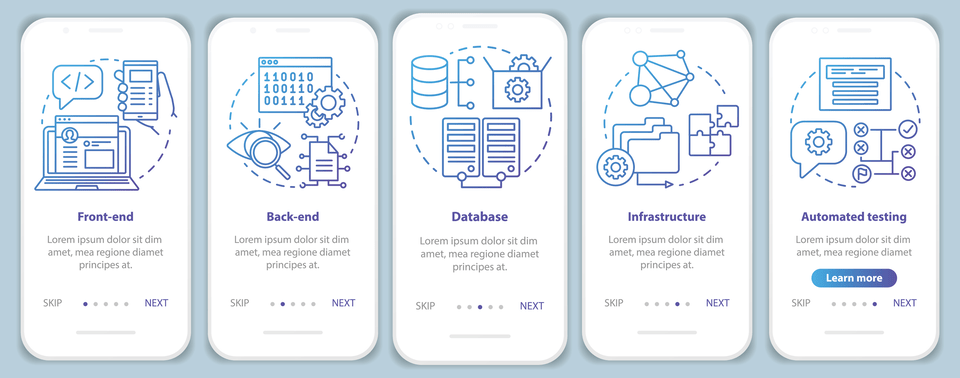03 7 月 What Are Dora Devops Research And Assessments Metrics?
Content
It is the measure of the number of times “a hotfix, a rollback, a fix-forward, or a patch” is required after a software deployment or a service change. This is typically measured using data from the project management, version control and CI/CD systems. Deployment Frequency refers to the frequency of successful software releases to production.

Derived by dividing the failed/rollback deployments by the total number of deployments. Failed deployments are Argo CD deployments that lead to a sync state of Degraded. You can use filters to define the exact subset of applications you want to measure. You can compare applications from selected runtimes, entire Kubernetes clusters, and specific applications. All these can be viewed for a specific timeframe, and you can select daily, weekly, or monthly granularity.
A low Change Failure Rate shows that a team identifies infrastructure errors and bugs before the code is deployed. It’s a sign of a sound deployment process and delivering high-quality software. Time to Restore Service indicates a team’s response time and development process efficiency. By spotting specific periods when deployment is delayed, you can identify problems in a workflow ﹣ unnecessary steps or issues with tools. You can also recognize problems like staff shortage or the need for longer testing time. Deployment Frequency depicts the consistency and speed of software delivery.
Plandek Enables You To Leverage The Power Of The Dora Metrics
When considering a metric tracker, it’s important to make sure it integrates with key software delivery systems including CI/CD, issue tracking and monitoring tools. It should also display metrics clearly in easily digestible formats so teams can quickly extract insights, identify trends and draw conclusions from the data. An example of this is an organisation which is facing multi-day software deployments that are often plagued by quality issues. An outcome the organisation may want is for teams to be able to release whenever they want, and to reduce downtime to customers.

With Four Keys, our solution was to create a generalized pipeline that can be extended to process inputs from a wide variety of sources. Any tool or system that can output an HTTP request can be integrated into the Four Keys pipeline, which receives events via webhooks and ingests them into BigQuery. In the next sections below, you will learn more about the four DORA metrics and why they are so useful in value stream management. Greg heads the Observability Practitioner team at Splunk, and is on a mission to spread the good word of Observability to the world. Greg’s career has taken him from the NOC to SRE to SRE management, with side stops in security and editorial functions. In addition to Observability, Greg’s professional interests include hiring, training, SRE culture, and operating effective remote teams.
Micro Macro Metrics
The Deployment Frequency metric refers to the frequency of successful software releases. It measures how often a company successfully deploys code to production for a particular application. This metric measures the time it takes for a service to recover from a failure. In all DevOps teams, no matter how effective, unplanned outages and incidents will happen.
- Change Failure percentage can give organizations a sense of how frequently they are shipping out code that causes issues.
- Every software comes with numerous features that can fulfill the everyday tasks of specific users.
- It assists in eradicating defects in the early stages, eliminates unwanted cases, provides better control, and ensures smoother testing cycles.
- DevOps KPI is a way to evaluate the performance of DevOps projects, practices, and products.
- Well maintained, modern, microservice pipelines can take on the order of 20 minutes to run.
- Propelo automatically correlates data across the Project Management, SCM, CI-CD and Deployment systems, and provides accurate Lead Time information.
- This metric is often used to determine the frequency of software failures by the DevOps team.
Into the velocity of a team and how quickly they respond to the ever-changing needs of users. On the other hand, mean time to recovery and change failure rate indicate the stability of a service and how responsive the team is to service outages or failures. One should be careful not to let the quality of their software delivery suffer in a quest for faster changes.
Focusing on adding features at the expense of quality results in substandard code, unstable releases and technical debt, eventually stifling progress. DevOps KPI is a way to evaluate the performance of DevOps projects, practices, and products. Depending on the KPI, it provides in-depth information on the effectiveness of the DevOps team and project, along with the steps that should be taken to raise the quality standards. Issues and bugs in software are inevitable but can be avoided too much extent by rigorous testing by the team. Sometimes, a few bugs can bypass all the tests and may reach the end consumer. In that case, the consumer will be reporting such issues to the developer, increasing the customer ticket volume.
Mean Time To Recovery Mttr
For example, you may be wasting too much time in code reviews, waiting for QA to approve changes, or holding a release until other teams finish their features. Every organization aims to attain its software’s utmost quality and speed, but downtime is an inevitable factor for an application. Getting to know about the availability and uptime of the software is a necessary DevOps productivity metric that will allow the DevOps team to plan maintenance. Measuring the acceptable downtime of an application is available, which can be measured through read-only and read or write availability. The deployment success rate is the measurement of the number of successful and failed deployments by the DevOps team.
It helps prevent languishing pull requests and pull requests that are too large to review effectively. The question is how to use DORA metrics to step up a team’s or organization’s game. It indicates there are organizational, cultural, or skill problems to address. Once these are managed, the underlying metric should naturally improve. DORA metrics are only valid in tracking a team’s progress in their DevOps journey.

Deployment Frequency – frequency of deployments of any kind, successful or failed. Software Deployment Fix deployment problems using modern strategies and best practices. Continuous Delivery Understand delivery, deployment, pipelines, and GitOps. The PR Resolution report can help you identify the bottlenecks in your PR cycles over the course of the sprint. Start incorporating metrics from the PR resolution report into your retrospectives, and coaching opportunities will be easier to identify.
What Gets Measured, Gets Done
A DORA survey is a simple way to collect information around the four DORA metrics and measure the current state of an organization’s software delivery performance. Google Cloud’s DevOps Research and Assessments team offers an official survey called the DORA DevOps Quick Check. Additionally, a good tool for developers does not solely display metrics.
Delivering code quickly to production comes from shipping as many times as possible while changing the batch size to be as small as possible. DORA uses its metrics to identify Elite, High, Medium, and Low performing teams. They claim that Elite teams are twice as likely to meet or exceed the performance goals of the organization. DORA metrics give a high-level view of a team’s performance, allowing to assess how well the team balances speed and stability and spot areas for improvement.

The first two metrics — Deployment Frequency and Mean Lead Time for Changes — measure the velocity of a team. MTTR and Change Failure rate are a measure of the quality and stability of a project. All four metrics can be derived from mining the tools that you are currently using. Which one you use is up to you, but my opinion is the latter is a far more accurate and useful measure.
Calculating The Dora Metrics
If deployment frequency is high, it might reveal bottlenecks in the development process or indicate that projects are too complex. Shipping often means the team is constantly perfecting their service and, if there is a problem with the code, it’s easier to find and remedy the issue. A technology company’s most valuable assets are its people and data, especially data about the organization itself. Propelo integrates https://globalcloudteam.com/ with over 40+ tools across the DevOps toolchain, and provides 150+ out-of-the-box software metrics and insights into the performance of engineering organizations. With access to these metrics they can be the ones who drive improvement. They’re not so concerned about metrics aggregated at a portfolio level, rather they want to see metrics at the micro level of the software and products they develop.
According to the DORA team, deployment frequency measures the number of deployments in a given time period. The DORA metrics provide a standard framework that helps DevOps and engineering leaders measure software delivery throughput and reliability . Their goal is to understand the practices, processes, and capabilities that enable teams to achieve high performance in software and value delivery. DevOps Research and Assessment team is a research program that was acquired by Google in 2018. From a product management perspective, they offer a view into how and when development teams can meet customer needs.
#kpi 3:defect Escape Rate
Even though DORA metrics provide a starting point for evaluating your software delivery performance, they can also present some challenges. Each metric typically also relies on collecting information from multiple tools and applications. Determining your Time to Restore Service, for example, may require collecting data from PagerDuty, GitHub and Jira.
Along with Deployment Frequency, it measures the velocity of software delivery. The four DORA metrics are used by DevOps teams to visualize and measure their performance. The metrics allow team leaders to take steps towards streamlined processes and increased value of the product. While LTTC and CFR measure the code quality, DF and MTTR are velocity metrics. If they are consistently tracked, and if steps are taken to improve them, together, they can help DevOps leaders boost their team’s performance and bring real business results. The best way to enhance DF is to ship a bunch of small changes, which has a few upsides.
While a low LTC may indicate that a team is efficient, if they can’t support the changes they’re implementing or they’re moving at an unsustainable pace, they risk sacrificing the user experience. Rather than compare the team’s Lead Time for Changes to other teams’ or organizations’ LTC, one should evaluate this metric over time and consider it an indication of growth . Deployment Frequency is the number of times code or software is deployed to production or “shipped”.
Greg holds a Master’s Degree in Industrial/Organizational Psychology from Old Dominion University. Observability and monitoring tools support the calculation of many of these metrics, either out of the box or through plugins. They can also be calculated manually, though that defeats a lot of the point of having them. In this article, I’ll discuss two of the most common sets of metrics in DevOps, DORA and MTTx. As an engineering leader, you need to empower your team with tools to achieve that. For some companies, DORA metrics will become a starting point, which then needs to be customized to fit their project.
Challenges Of Dora Assessment
Wherever the incident data is stored, the important thing is to have each incident mapped to an ID of a deployment. This lets you identify the percentage of deployments that had at least one incident—resulting in the change failure rate. DORA DoRa Metrics software DevOps started as an independent DevOps research group and was acquired by Google in 2018. Beyond the DORA Metrics, DORA provides DevOps best practices that help organizations improve software development and delivery through data-driven insights.



